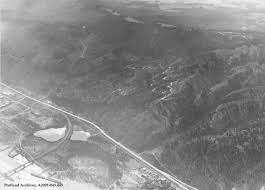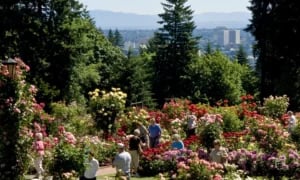How Sustainable Construction Can Transform Communities
For most people, when they hear the word construction, the images that typically come to mind are of bulldozers tearing up grass, trees being knocked down to make way for concrete, native plants ripped up all in pursuit of more buildings, and more money. Although sustainability has become more of a concern within the construction industry as of late, construction, in general, is often associated with negative environmental impacts like loss of biodiversity and water and air pollution.
However, just as construction can help transform communities for the better and play a role in making innovations across a multitude of industries come to life, it can also help bridge the gap between civilization and environmental consideration. Just take a look at the story of Forest Park in Portland, Oregon, one of the largest urban nature reserves in the United States.
The Birth of Forest Park in Portland, Oregon
As the city of Portland began to experience rapid growth and development in the early 1900s, the Municipal Park Commission asked the Olmsted Brothers Company to develop a park planning study for the city. The Olmsted Brothers Company was a nationally renowned landscape design and architecture firm formed in 1898, and their resume included accomplishments such as helping found the American Society for Landscape Architects.
Heavily inspired by the City Beautiful Movement, most of their work focused on outdoor spaces and the establishment of national parks; they helped develop the road systems of Yosemite National Park and the Great Smoky Mountains National Park, and they also designed the campus grounds of Oregon State University and the University of Washington.
 This is a snapshot of the early stages of Forest Park in the 1930s.
This is a snapshot of the early stages of Forest Park in the 1930s.
The Olmsted plan suggested that Portland should purchase 5,100 acres of rolling wooded hills west of the Willamette River to establish a park full of wilderness and mystery, a sharp juxtaposition to the industrial heart of downtown Portland. In addition to acquiring this land, the Olmsted plan also recommended that the city build a 40-mile loop to run around all of Portland.
Forest Park Today: A Microcosm of Biodiversity
 The Portland International Rose Test Garden is the oldest continuously operated public rose test garden in the United States.
The Portland International Rose Test Garden is the oldest continuously operated public rose test garden in the United States.
Today, Forest Park is one of America’s largest forest reserves located in a city, and it now includes Washington Park, the Oregon Zoo, the Hoyt Arboretum, the Portland Japanese Garden, and of course, the International Rose Test Garden. The Park’s existence has meant the preservation of many indigenous animal and plant species; improved air quality for the city; and improved quality of rainwater, which helps reduce pollution in the Willamette River.
Forest Park has allowed people in an otherwise dense urban environment to access the wonders of the natural world. Although Oregon as a state is a host to many gorgeous outdoor activities, most of those activities require a minimum of a one-hour drive, if not longer. Forest Park gives Portland’s citizens a chance to explore their state’s beauty just ten to fifteen minutes outside of their homes.
We hope that you’re just as inspired as we are by the ways that construction and architecture can come together to elevate and integrate the outdoors into day-to-day living.

-1.png?width=112&height=112&name=image%20(4)-1.png)














